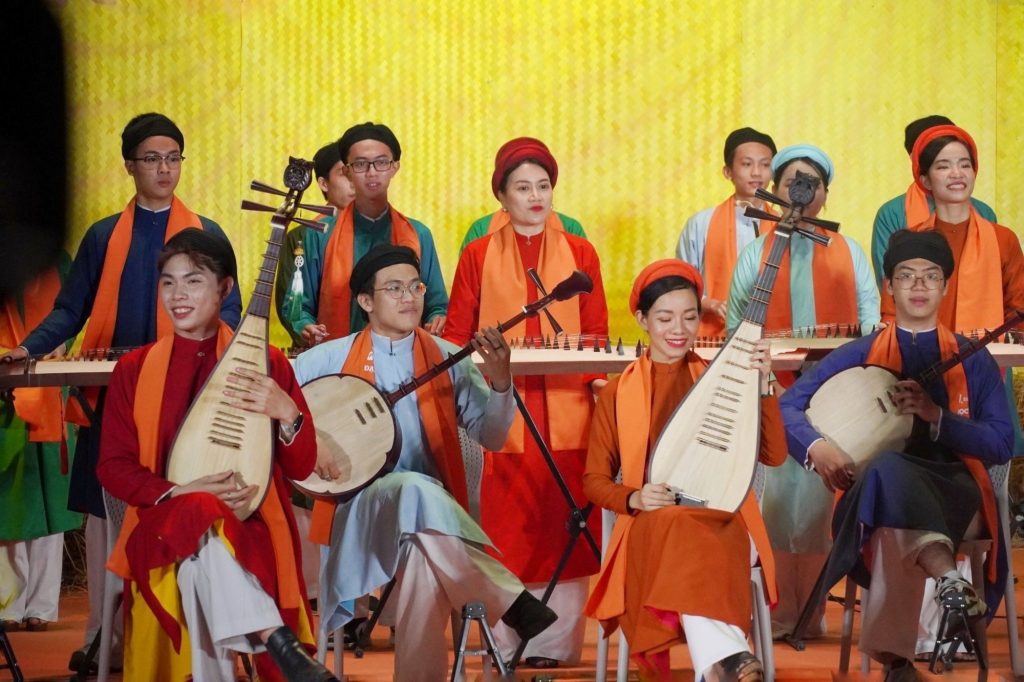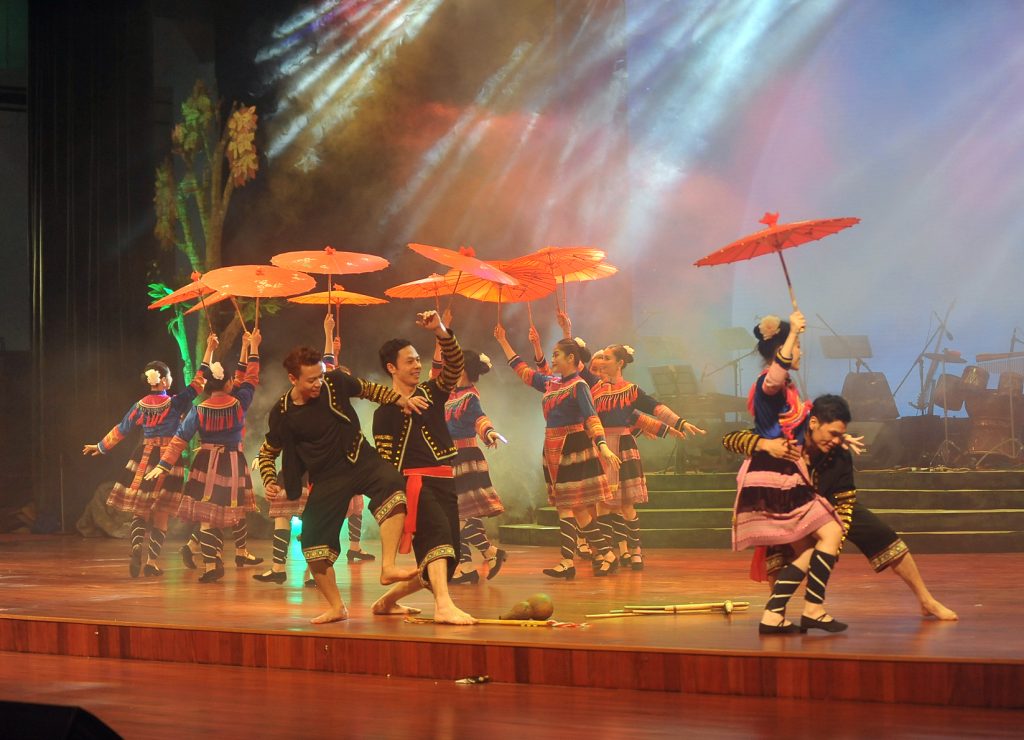No longer echoing through village temples or royal courts, folk songs, lullabies, and traditional tunes are now reborn in the pounding bass of trap and go viral on TikTok. Seemingly opposites, folk music and trap rhythms blend in a strange harmony: one side carries the poetic essence of rural memories, while the other speaks the musical language of the contemporary generation. Gen Z is remixing their cultural identity – not through textbooks, but through melodies, drops, and views. As local sounds are “blown” into the digital realm, tradition not only survives but explodes.
When folk melodies are sung amid the trap “drops”
Amid the wave of international electronic music, the sound of Hue folk songs emerges like a strange breeze. It’s no longer soft in the traditional sense, but sharp and distinctive, standing out against the pounding bass and trap beats. The folk essence becomes a unique touchpoint in the vibrant TikTok universe. Listeners are not just surprised – they are drawn into a feeling that’s both unfamiliar and familiar. A deep note of identity, shining brightly in a world of colorful sound.

No stage, no traditional orchestra, yet the folk tune still rises with pride. From a content creator’s bedroom to hipster cafés, the old sound is revived in a new light. The songs that once echoed across the countryside now serve as a backdrop for the new generation to tell their stories. And in this “remix”, it’s not just the sound that’s recreated – memories are renewed as well. A way of storytelling through melody, carrying a distinctly Vietnamese identity in a digital age.
Gen Z and the power to reconstruct the audiovisual culture
Generation Z doesn’t learn folk music from gongs, drums, or traditional stages, but from YouTube, TikTok, and inspiring mixes. They don’t preach about tradition; instead, they remix it, making it both iconic and shareable. In the laptops of bedroom producers, folk elements are no longer static heritage. They transform into viral hooks and sounds that make listeners hit “pause” to truly listen. In this way, traditional culture breaks free from the dust of time.

Through trap beats and copy-paste techniques, Gen Z carries out a seemingly small but powerful act: bringing folk music back into daily life. No longer bound by norms, music becomes a space for experimentation, allowing individuals to define their identities in their own way. It’s this freedom that makes folk traditions more vibrant than ever. Without the need for intermediaries like preservation or festivals, indigenous sounds subtly slip into everyone’s earbuds. It’s a form of “digital oral tradition” for the new age.
From communal houses to TikTok: Journey of memories
In rural areas, folk music was once a spiritual voice—tied to seasons, beliefs, and community festivals. However, in urban life, it faded, like a blurred photograph hanging on the wall of an old house. Now, these ancient songs are not only revived but have gone viral, amassing millions of views. Platforms like TikTok, Reels, and Shorts have become megaphones for ancient culture. And young people, whether by chance or design, have become the “remix ambassadors” of memory.

The strange thing is: these remixed folk songs don’t lose their sacred essence; instead, they open up a new way of feeling. Not everyone may understand the old lyrics, but the melody, tone, and emotion still resonate. A military drum mixed with a trap beat can evoke both nostalgia and become addictive. Memory doesn’t stay still—it dances, soars, and spreads in every way possible. This is how tradition escapes the village communal halls and steps into the digital world without losing its essence.
Redefining the “Vietnamese identity”
In a world where everything can become a trend, the emergence of folk music as a “strange sound” is an unexpected victory. No need for elaborate messages—just a clever drop for a few seconds, and the youth have created a cultural touchpoint. The folk tunes, the chants, and the sound of the dan tranh (Vietnamese 16-stringed plucked zither) are no longer “old values”—they’ve become aesthetic ingredients. A subtle yet profound declaration of identity. In this game, Vietnamese essence doesn’t need to be provenit is simply felt.

By blending folk music with beats, Gen Z isn’t just playing with sound, but also with identity. They aren’t dressing up the traditional in modern clothes; instead, they’re letting it live in a new vibe. It’s a shift that’s subtle, without grand gestures or theories, but deeply authentic. As a result, folk music is no longer just a “heritage”—it has become a “source of inspiration”. And the youth, whether by accident or intention, are rewriting the concept of “tradition” in their own language.
Remixing memories: Integrated, not nostalgic
The trend of folk music on trap beats is not about resurrecting nostalgia, but rather a form of harmony. There’s no longer a divide between the old and the new; instead, there’s a subtle transformation between two worlds. The sounds of drum beats or lullabies no longer push listeners away but make them pause. It’s a pause that’s necessary in a world that moves too fast. And in that pause, music becomes a bridge between what has passed and what is yet to come.

What matters is not the technicality of the remixing, but the approach: respectful yet not idolizing, innovative yet not dismissing. It is this flexibility that prevents folk music from being “preserved in stagnation” and allows it to live within the pulse of the present. It reminds us that memories are not meant to be stored in a glass case, but to be opened, experimented with, played with, and carried in every step. And sometimes, those memories echo… from the earbuds of a child born in 2007.

When a Southern Vietnamese folk tune makes its way into an international playlist, or when ca trù echoes in a viral TikTok scene, we realize that folk music has never truly disappeared—it has simply been quietly transforming to continue its existence. And it is the remixing hands of the younger generation that are carrying that legacy forward, through trap beats, online waves, and deeply authentic emotions in an otherwise virtual age.
Kina | Cameron Truong






